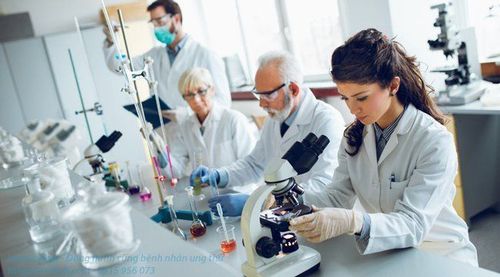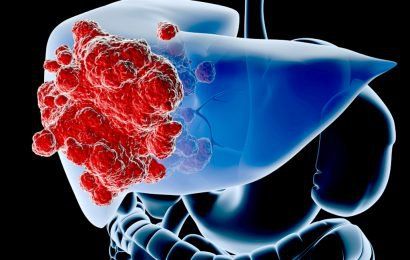This is an automatically translated article.
1. What is a pathological test?
Pathology is one of the departments of the laboratory in the hospital. This is the place where biopsies, cytology, and autopsies are performed at the request of the clinical department.
The task of the pathology test is to receive, take samples, develop staining, read pathological specimens, preserve samples, and consult with a pathologist to make a diagnosis. exact pathology. Among them, patient care activities are always a top priority.
Activities of the pathology specialty include:
Training: Teaching pathology for students, training in pathology for residents, graduate students, and specialists I and graduate in related majors; Professional work: Including cytological diagnostic tests, histopathology, immediate biopsies, immunohistochemistry; Scientific research: Participating in and guiding projects at all levels, participating in scientific conferences and seminars, contributing to scientific research works at national and international levels.
2. Deploying all kinds of pathological tests
2.1. Diagnostic cytology This is a test to take a sample of cells from the patient's body tissue and spread it on a slide. The technician then stains the sample with different dyes to evaluate the cytological changes on the microscope, thereby making a pathological diagnosis.
2.2. Histopathological diagnosis Histological diagnosis refers to the microscopic examination of tissue specimens to identify signs of disease. Specifically in clinical medicine, histopathology is the examination of a biopsy specimen or surgical specimen by a pathologist, after processing this specimen and placing it on lamella.
2.3. Immediate biopsy diagnosis Immediate biopsy diagnosis is a rapid histopathological test method, often applied in surgery. The surgeon will remove part or all of the tumor and transfer it to the pathology department. Then, the pathologist will cut the patient on the cold cutter to make a specimen and based on that to determine the benign or malignant tumor and histological type.
2.4. Immunohistochemical diagnosis Immunohistochemical diagnosis helps to identify the origin of poorly differentiated tumors, distinguishing benign tumor cells from cancer in many cases that are difficult to diagnose by conventional histopathology. This type of test is applied in the diagnosis of some genetic mutations such as P53 gene mutation in many cancers, EGFR gene mutation in lung cancer, Her2 gene mutation in breast cancer. In addition, it is also used to predict and guide cancer treatment, especially targeted therapy.
Through the implementation of necessary pathological tests, the doctor will have more basis for diagnosis, from which he can designate the best course of treatment for the patient.

Xét nghiệm chẩn đoán hóa mô miễn dịch
3. Results of implementation of pathology
Results of histopathological development may vary depending on the type of cancer. However, most pathology development reports contain the following sections:
Identification Information Preliminary information includes name, date of birth, medical record number, contact information of the patient. patient for doctors and laboratories. In addition, the pathologic identification information includes a brief description of the patient's tissue or specimen, including which part of the body was surgically removed or biopsied.
General description The pathologist will conduct an initial description of the tissue sample, including size, shape, color, weight, and organoleptic properties. Cancerous tissue is usually measured in "cm" size units.
Microscopic description: The pathologist cuts tissue into thin layers, places them on slides, stains them with dye, and looks at details with a microscope. The pathologist notes what the cancer cells look like, how they compare to normal cells, and whether they have spread into nearby tissue.
4. Information guiding diagnosis and treatment
The following sections are detailed information after implementing pathology, valuable to guide diagnosis and treatment, including:
4.1. Level The pathologist conducts the determination of the extent of the cancer. Depending on each cancer, there will be criteria to determine the specific level, reflecting the cancer's ability to grow and spread. In general, the levels can be assessed as follows:
Grade 1: Mild, cell differentiation is still good. Patient cells look slightly different from normal cells. However, the growth rate is not as fast as malignant cells; Level 2: Moderate, moderate differentiation ability. Patient cells do not look normal. They are growing faster than usual; Level 3: Severe, poor differentiation ability. The cells in the specimen look very different from normal cells. They are growing, invasive, or spreading rapidly. 4.2. Invasion Non-invasive cancer means that a mass of malignant cells is located in a certain part of the body. Cancer that has the ability to spread is called invasive. Metastatic cancer is when malignant cells have spread to another part of the body, such as the lymph nodes, lungs, or brain.
4.3. Cells around the tumor For a pathological sample, the surgeon removes an extra area of normal tissue around the tumor, called the margin of the tumor. The pathologist will study the area to see if it contains cancer cells. There are three possible outcomes:
There is cancer: Cancer cells are found at the edge of the tumor. Thus, the patient needs a relatively large number of surgeries; No cancer detected: The margin does not contain cancer cells; There are cancer cells at the edge, but they have not spread to the entire area. The patient is more likely to require additional surgery. 4.4. Lymph nodes Lymph nodes are small, smooth, oval-shaped structures scattered along the lymphatic vessels that are part of the immune system. The pathologist may biopsy lymph nodes near the tumor to see if cancer has spread to these nodes.
4.5. Mitotic rate This is an indicator of how quickly cancer cells divide. To get this number, the pathologist must count the number of dividing cells in a given amount of tissue. The mitotic rate is often used to determine the stage of cancer.
4.6. Cancer Stage Once the stage of the cancer has been determined, the doctor will choose the most appropriate treatment.
4.7. Diagnosis The pathologist will consider all of the foregoing and make a pathological diagnosis, followed by advice on treatment options.
4.8. Recommend additional testing If the patient's cancer is difficult to diagnose, the doctor will recommend additional testing. The patient may have additional tests to help confirm the diagnosis.
5. Preservation of pathological specimens

Hình ảnh tủ lạnh bảo quản mẫu
Specimens need to be stored properly, because if there is any problem with the preservation process, the pathological specimens may be damaged, leading to erroneous test results:
For smear cytology specimens , it should be fixed with absolute alcohol or let it dry naturally before shipping. Store in a dry place, avoid generating mold and dirt on the slide, especially on the side of the slide with the specimen; For fluid specimens, fixation is not required if smears are obtained within 12 hours. If stored in a refrigerator of 2-4 degrees Celsius, it can be kept for 72 hours. If longer storage is required, the sample can be fixed with a 50% ethanol solution at a ratio of 1:1 depending on the volume; For specimens that are tissue samples (biopsy or surgical specimens), usually must be fixed with formol immediately after collection. The aim is to preserve (or only slightly alter) the basic structure of the cellular organization, to resist destruction by intracellular enzymes, and to prevent the risk of infection. Pathological examination helps the doctor confirm the diagnosis of tumors and prescribe appropriate treatment. There are many factors affecting the results of histopathology, however, the preservation and deployment of samples are important factors, which significantly affect the diagnostic results.
Please dial HOTLINE for more information or register for an appointment HERE. Download MyVinmec app to make appointments faster and to manage your bookings easily.
References: webmd.com, mayoclinic.org













